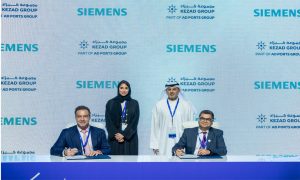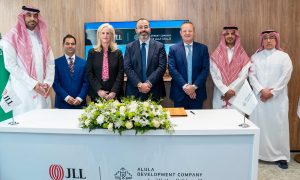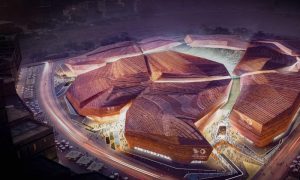Construction planning: Bringing a holistic view to projects
Middle East Consultant discusses the all-important topic of construction planning and looks at the approaches and innovations that consultants rely on

Buildings are a highly complicated arrangement of structural elements, mechanical systems, materials and finishes. Hundreds of elements must come together perfectly for a project to be successful, but perhaps the most important part of any project is construction planning. In essence, construction plans take an architect’s ideas and designs and transform them into something that can actually be built by contractors.
Detailed, well thought-out construction plans are essential for any construction project to mirror the original design intent, and they can also ensure that work progresses smoothly, sticks to deadlines and remains within the client’s budget. Plans are also essential to secure permissions and permits from local authorities. They have other uses too; to some extent they can be used to track the progress of a project. That said, a more accurate picture can be drawn up with the help of an up-to-date construction programme or schedule and other modern innovations.
Dan Palmer, director of Master Planning & Sustainable Development at Arcadis Middle East, is keen to point out that planners take a broader, more full-bodied approach to projects.
“Planners often take a more holistic view of a project and look not just at individual assets, but at how a project fits within the context of a wider community. This can best be observed when it comes to designing sustainable communities. Here, it’s not just about designing efficient buildings but about considering other aspects such as public transportation access, integration with the public realm and open space that can facilitate healthier lifestyles. Once a building is placed into that sort of environment, you’re already one step ahead in terms of designing a sustainable community and creating something which is a success for all parties involved.”
In the last couple of years, a number of new innovations and technologies have enabled consultants to scale their services to clients up to the next level. It’s now possible for clients to experience a project before the first brick has even been laid.
“3D modelling, building information modelling (BIM), 4D innovations, virtual reality and other smart solutions offer clients the ability to visualise projects in their conceptual stage, and with BIM, the ability to monitor project progress and cost as they are built. Our smart initiatives also allow projects to be efficiently monitored and managed,” comments Syed Khizer Ahmed, VP and Infrastructure director at Parsons.
Planners are also scaling up engagement with other project stakeholders, in an effort to ensure that work proceeds smoothly. Timothy Harwin, director at HKA’s Dubai office, comments, “There are many manuals and protocols regarding planning and scheduling of construction projects; however, in my experience the best planning consultants are those who are able to engage with the technical aspects of a project, and who understand the complexities of coordinating and scheduling various stakeholders.”
Early Engagement
Although clients have evolved in some respects, there are still opportunities for improvement, particularly with regard to when consultants are brought on. For construction planning to have the biggest impact, consultants should be engaged as early as possible in the lifecycle of a project. This has not traditionally been the case in the region, but the market is beginning to embrace early engagement.
Arcadis’ Palmer states, “Early involvement of all parties is becoming more common, particularly on design and build contracts, although it’s not quite the norm yet in the region. The Middle East has consistently proven its ability to modernise and embrace new ways of working, so as the industry begins to demonstrate the benefits of ‘a one team from the start’ approach, this way of working is likely to become more common. This approach also allows an integrated development process where all parties are bought into the same common goal, ensuring the success of the design and implementation process.”
HKA’s Harwin agrees with Palmer’s thoughts, saying, “I agree that this is a growing trend in the region, and past experience has taught clients that it is best to spend time and effort in planning the project from the beginning, since this can assist them in forming various financing, contracting and procurement strategies to mitigate risks.”
Peeyush Shukla, program director at Parsons, is keen to highlight that involving contractors early on in a project’s lifecycle also has its own benefits.
“It works very well under design-build or public-private partnership types of procurement. If adopted, contractor early involvement results in cost optimisation and efficient construction processes. We have experienced impressive outcomes due to the early involvement of the contractor in our projects in other parts of the world; however, design-build and public-private partnerships are not commonly used procurement systems in this region. In the Middle East, a commonly adopted procurement system is design-procure-construct, and under such procurement, contractor early involvement is not possible.”
One of the drivers encouraging project owners to engage consultants earlier is the liquidity crunch, which has put significant pressure on project budgets. As a result, there’s a greater emphasis on getting the most value out of budgets.
“Previously, clients were open to get going, start constructing and resolve technical, planning and commercial problems as they arose. This was done with the aim of completing the project as soon as possible and reaping the commercial benefits. As a result, many construction contracts were not tailored to the specific requirements of the project, and construction programmes were not sufficiently thought out and coordinated. Extensions of time were not awarded, contractors became unmotivated and projects were further delayed as a result. In the current market, which is often driven by stricter project financing constraints, we see that clients are now motivated to engage with detailed planning at an earlier stage. This allows the commercial risks to be identified earlier and contracting or procurement strategies put in place,” elaborates HKA’s Harwin.
Parsons’ Ahmed summarises: “Early engagement is the right approach and a win-win for all involved. By being involved in the design phase, there is an opportunity for us to contribute in design development, which not only meets client expectations but also ensures agency compliance, constructability and cost-effectiveness.”
Challenges
While construction planning is a powerful tool that can steer a project to success, a number of issues can reduce its effectiveness. James Barraclough, master planner associate and senior project manager at Parsons, warns that programmes or plans may not be effective if a client’s requirements have not been understood.
“Ensuring the entire team has a clear understanding of the client’s vision and needs from the outset is key. Maintaining this understanding throughout the life of the project, as different options are developed, tested and revised, is paramount. Both capturing and communicating the progress and direction to all team members throughout the project lifecycle is critical to ensuring the team’s combined efforts achieve the same client goals and relevant authority approvals.”
HKA’s Harwin points out that it can also be difficult to get all the involved parties to use programmes to their full potential. “It is sometimes challenging to convince parties to engage with programmes and even schedules as a planning tool (as they are intended), rather than using them to simply track progress and support claims submissions. This mindset can usually be changed by finding a way to persuade the various engineering, procurement, construction and commissioning managers to take ownership of certain sections of the programme – with the assistance of the planner to make their life easier.”
Drawing up plans can also be a challenge, as it involves satisfying multiple parties. Palmer notes: “One of the main challenges is balancing the needs of all parties involved. The design team needs to ensure they provide an interesting and attractive environment for residents and users, while also providing an attractive investment opportunity within the target development budget.”
Once their services have been engaged, consultants must also walk a fine line to maintain neutrality in dealings with project owners, contractors and any other stakeholders. “The role of a consultant is to provide a client with advice on what the best course of action is to take under the current circumstances, and not to tell a client what they want to hear. Sometimes this professional advice may come with some unpleasant news for the client regarding project delays, forecast completion dates or contractual culpability,” asserts HKA’s Harwin.
“However, in my experience the best consultants provide real-world solutions on how clients can mitigate their exposure, recover the time and money that they are due and provide recommendations on how to improve future practices.”
Although maintaining neutrality may have been a challenge in the past, Parsons’ Ahmed reckons the regional market has matured in recent times. “Maintaining neutrality is indeed a professional obligation, and Parsons ensures that it maintains a neutral position at all times. We don’t see this as a challenge, as the industry has matured. Clients and stakeholders respect and value the impartial and subject-specific technical solutions we offer.”
Mitigating Project Challenges
Considering the sheer number of elements that have to come together properly for a project to be successful, it’s almost a given that challenges will arise. One of the most common challenges is delays, and here construction plans and programmes can help get a project back on track.
“When projects are delayed, both contractors and employers need to make decisions on the next course of action, based on the circumstances. Whatever decision is made comes under intense scrutiny later in the project, whether a claim for extension of time is made or the parties decide to enter into some form of agreement or settlement. To make the best decision, clients need to be armed with an accurate and updated construction programme. This allows a proper assessment to be carried out and timely decisions to be made,” explains HKA’s Harwin.
Parsons’ Shukla elaborates. “For Parsons, tracking schedule and project costs begins long before reaching the shop-drawing stage. Immediately upon the commencement of the construction stage, we share a guideline with contractors for the development of a project schedule. We ensure that the project schedule is fully resource loaded and sufficiently detailed to monitor. Activities are discrete to a degree that even a minor deviation is identifiable. Processes like engineering, procurement, construction, testing and commissioning are all well-defined and tracked. In addition, we ensure that project schedules clearly define the timeline for the submission of shop drawings, a period for review and approval, dates for ordering material and dates for the delivery of material. Our schedulers regularly monitor progress and flag areas of concern.”
He concludes, “Ensuring that architectural/design intentions are met is also tracked through a meticulous process. While reviewing a material submission or approving a vendor, we ensure that a compliance statement in line with design/architectural intent is prepared. This helps in identifying any deviation and ensures compliance to project requirements. Visiting vendors’ facilities, reviewing samples and preparing mock-ups also helps in this regard.”



















